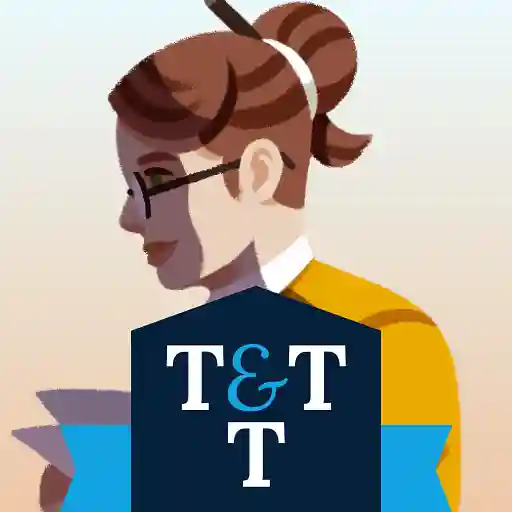What makes the Hero’s Journey endure across centuries of storytelling? It’s not so much the dragons or prophecies, but the rhythm of change itself. In this session, Martin from the Reedsy team explores why this ancient structure continues to shape great narratives, from Gilgamesh to Hamlet to The Matrix. More than a formula, it’s a psychological map of transformation — leaving comfort, facing trials, and returning wiser.
This summary traces Martin’s breakdown of the Hero’s Journey, its origins, and how you can adapt it to your own story. To dive deeper into each phase, follow the timestamps below. As a bonus, you can download the slide deck for this webinar right here.
Why we tell "hero" stories (04:10)
Before focusing on specific stages or beats, it helps to ask: what’s so enticing about this story structure? Across cultures (from The Book of Exodus to The Monkey King), humanity has always told stories about transformation. A proud ruler who learns humility, an uncertain prince who becomes a leader, or a rebellious monkey who gains wisdom — the details may change, but the pattern remains the same: someone ventures into chaos and returns changed.
The reason these stories endure is that they mirror us. They’re not about perfection, but evolution; they’re tales about courage, sacrifice, and empathy. After all, civilizations wouldn’t survive on myths about greed or betrayal — they’d eat themselves alive!
The Hero’s Journey, then, is the world’s oldest story pattern for personal growth. Whether your hero faces dragons or their own self-doubt, the arc of transformation stays the same (hence the timeless quality).
For a closer look at the Hero’s Journey, you can read our in-depth guide here.
Joseph Campbell and the myth of transformation (07:45)
Fast forward a few thousand years, and mythologist Joseph Campbell gave this age-old pattern its modern form. In The Hero with a Thousand Faces (1949), he defines the “monomyth”: a structure that transcends time, culture, and religion.
Drawing on Jungian psychology, Campbell identified universal archetypes — the Mentor, the Shadow, the Trickster — as expressions of human drives for power, freedom, and understanding. His 17-stage model was later streamlined by screenwriter Christopher Vogler into the familiar 12-step Hero’s Journey.
Mapping the journey from departure to return (11:25)
Even the most literary stories follow certain set beats, often without realizing it. Take Hamlet as an example — proof that the Hero’s Journey belongs not only to chosen ones and warriors, but to anyone confronting fear and doubt.
Ordinary World — Hamlet mourns his father in a decaying court. His “normal” world is uneasy — the perfect setup for change.
Call to Adventure — The ghost of Hamlet’s father (the late King of Denmark) appears, demanding vengeance. The familiar collapses.
Refusal of the Call — Hamlet hesitates, torn between duty and damnation: the resistance every hero faces.
Meeting the Mentor — For Hamlet, guidance comes from within. His soliloquies serve as self-mentorship.
Crossing the Threshold — Hamlet commits to action, feigning madness to expose the truth. There’s no turning back!
Tests, Allies, and Enemies — The heart of Act II. Hamlet’s behavior unsettles the court and alienates Ophelia. Here, every protagonist meets obstacles and learns the “rules” of their new world.
Approach to the Inmost Cave — The stakes heighten. Hamlet finds Claudius praying, and overthinks his chance for revenge.
The Ordeal — The “belly of the whale.” Hamlet kills the wrong man, and everything unravels — exile, madness, chaos.
The Reward — Hamlet regains clarity in exile; his reward is hard-won wisdom and inner peace.
The Road Back —He returns changed, calmer, and resolute, knowing that his duel with Laertes may end in death.
The Resurrection —In his final duel, Hamlet meets his fate head-on. He strikes down Claudius (his father’s murderer), fulfilling his transformation at last.
Return with the Elixir — Hamlet dies at peace, exposing corruption and restoring order. His “elixir” is truth: the understanding that integrity (though costly) can renew a broken world.
Now, not every story hits every beat, but it doesn’t have to. The strength of the Hero’s Journey lies not in precision, but in execution. Plot and dialogue are tools that help bring the character’s inner journey into the real world.
The Hero’s Journey today: transformation, not formula (30:06)
Every great story (from a wedding toast to a fantasy epic) follows the same rhythm: “I thought things were one way. I went through something hard. I came back changed.”
Once you understand that rhythm, you can reinvent it. Not every hero survives, and not every “elixir” glows (and of course, predictability kills wonder).
Hamlet’s journey ends in tragedy, but his insight redeems him. So, your story might end in triumph, peace, or self-awareness, but what matters is change. The story’s structure should always serve the narrative, not the other way around. The mentor might be a memory; the ordeal, emotional rather than epic. The “return” could be as quiet as self-forgiveness.
And if you’re joining Reedsy’s Novel Sprint, just think of yourself as the hero of your own creative journey. The blank page, your call to adventure. You’ll face ordeals, find allies — and return with the elixir: 50,000 words and a new understanding of what you’re capable of!





